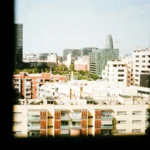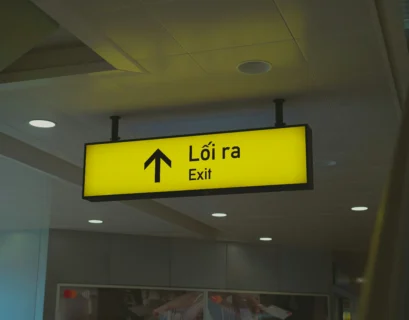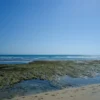If Ibiza and Mallorca are the first names that come to mind for party-goers, Spain has several mainland and island cities that deliver lively, distinctive nightlife without the island holiday crowds. Below you’ll find practical, scannable guides to Barcelona, Madrid, Valencia, Marbella, Málaga and Tenerife what to expect, where to go, and how they differ so you can pick the right scene for your night out. For a snapshot, see the quick comparison, and don’t miss the practical tips at the end.

Quick comparison: at-a-glance
| City | Vibe | Typical music | Price level (1=bargain, 5=luxury) | Best for |
|---|---|---|---|---|
| Barcelona | Diverse beach to club terraces | House, techno, indie, commercial | 3 | Variety & festival-style nights |
| Madrid | Intense, late-starting capital scene | Pop, electronic, flamenco fusions | 3 | All-night clubbing and bars |
| Valencia | Laid-back with energetic pockets | Latin, commercial house, electronic | 2 | Chill beach nights and underground clubs |
| Marbella | Glamorous, VIP-oriented | Commercial, R&B, mainstream EDM | 5 | Luxury beach clubs and VIP tables |
| Málaga | Young, international, affordable | Pop, reggaeton, electronic | 2 | Budget-friendly nights and terraces |
| Tenerife | Resort nightlife with beach-party focus | Commercial, electronic, Latin | 3 | Beach bars and nightclub districts |
City-by-city breakdown
Barcelona the all-rounder
Barcelona blends seaside bars, terraces and high-profile clubs. Start with aperitivos on a rooftop, move to a beach club at sunset, and finish at a late-night venue playing house or techno. The city also hosts recurring music festivals and underground nights, making it easy to find any style you prefer.
- Where to go: Barceloneta for beach vibes, Eixample for cocktail bars, Poble-sec and Raval for intimate music spots.
- When to go: Peak season (June–September) for beach clubs; year-round for city clubbing.
- Tip: Many clubs enforce dress codes and door policies book tables or check guestlists for weekend peak nights.
Madrid the capital that never really sleeps
Madrid’s nightlife starts late and runs into the early morning. From tapas bars that morph into clubs to large multi-room venues, the city caters to every taste. Expect crowds to peak after midnight; major clubs and after-parties often run until 5–6 AM.
- Where to go: Malasaña and Chueca for indie and queer scenes; La Latina for bar-hopping; Salamanca for upscale clubs.
- When to go: Weekends and public holidays; Madrid’s nightlife is year-round with best nights on Fridays and Saturdays.
- Tip: Tapas before the club is a local ritual plan a late dinner to blend in.

Valencia beach city with a relaxed pulse
Valencia mixes beach-side parties with a more relaxed urban nightlife. The scene is approachable and less frenetic than Barcelona or Madrid, with strong Latin and commercial house influences. Smaller clubs and local venues make it a good choice for travelers wanting lively nights without high prices.
- Where to go: Ruzafa and El Carmen for city nightlife; Playa de la Malvarrosa for evening beach bars.
- When to go: Summer months for beach parties and festival dates like local electronic events.
- Tip: Valencia’s student population keeps late-week nights lively and wallet-friendly.
Marbella glamour and VIP culture
Marbella on the Costa del Sol is known for upscale beach clubs, bottle service and exclusive nightclubs where appearance and reservations often matter more than spontaneity. If you want a glamorous night with premium service, Marbella delivers but at a price.
- Where to go: Puerto Banús for luxury marina clubs and high-end beach venues.
- When to go: Summer and holiday weekends for peak VIP activity.
- Tip: Expect premium pricing and consider booking ahead for tables or cabanas.
Málaga affordable and youthful
Málaga combines a coastal, youthful energy with approachable prices. The city has a mix of bars, terrace hangouts and eclectic clubs with local and international DJs. It’s a practical choice for lively nights without the premium costs of Marbella.
- Where to go: Centro Histórico for bars and clubs; Playa de la Malagueta for summer beach bars.
- When to go: Summer is busiest; spring and autumn remain lively thanks to students and tourists.
- Tip: Try bar-hopping in the historic center before moving to clubs later in the night.
Tenerife island nightlife beyond the Balearics
Tenerife (Canary Islands) offers resort-oriented nightlife, especially around Playa de las Américas, where beach bars, pool parties and clubs create a holiday-party atmosphere. The island combines day-to-night beach club culture with late-night venues for dancing.
- Where to go: Playa de las Américas for concentrated nightlife; Los Cristianos for quieter options.
- When to go: Winter is popular due to warm weather year-round; summer has the typical peak-party vibe.
- Tip: Party districts are walkable; taxis run late but plan returns on peak nights.

Practical tips and safety
- Check opening hours and dress codes before you go many venues enforce specific policies.
- Book in advance for popular clubs or rooftop tables, especially during summer and festival dates.
- Use licensed taxis or authorized ride apps late at night; avoid isolated streets when traveling alone.
- Look up event calendars or local listings to catch guest DJs, themed nights or seasonal festivals.
FAQs
How do nightlife start times differ between Madrid and Barcelona clubs?
Madrid starts later: bars fill 10–11 PM, clubs get busy around 1:30–3 AM, and many keep going until 5–6 AM. Barcelona runs a touch earlier rooftops and bars from 9–10 PM, clubs peaking 1–2 AM. If you’re on a guestlist, aim to arrive before peak to avoid queues and stricter door policies.
What is the best way to plan a beach-to-club night in Barcelona?
Time sunset drinks on a rooftop, then head to Barceloneta for a beach club set, and finish at a late-night venue in Eixample or Poblenou. Pre-book guestlists or tables, check dress codes, and factor in transport Metro runs late on weekends, while night buses and taxis cover after-hours. Hydrate and pace your night to enjoy all three stages.
Which Spanish city offers the most affordable late-night nightlife for students?
Málaga and Valencia are the most budget-friendly of the cities listed (both at price level 2). Expect student nights midweek, low or no cover at select venues, and drink deals around university areas. Barcelona and Madrid offer more variety but typically cost more per night out.
How can I safely get back to my accommodation after late clubbing?
Plan your route before you go: note night-bus lines, Metro closing times, and set up a licensed taxi or ride-hailing app. Stick to well-lit streets, leave with friends when possible, and share your live location with someone you trust. Keep your phone charged and carry a backup payment option.
What neighborhoods in Valencia and Málaga are best for bar-hopping nights?
In Valencia, Ruzafa and El Carmen concentrate lively bars and small clubs within easy walking distance. In Málaga, the Centro Histórico is ideal for hopping between tapas bars, cocktail spots and late-night venues, with summer beach bars at La Malagueta as a warm-up or wind-down.
Conclusion
Spain’s party map goes far beyond Ibiza and Mallorca. Barcelona and Madrid offer diverse, full-spectrum nightlife; Valencia and Málaga provide accessible beach-city energy; Marbella serves a luxury crowd; and Tenerife combines resort-style beach parties with clubbing. Choose by vibe, budget and how late you want the night to run, then check event listings and reserve where necessary to make the most of your evening.













